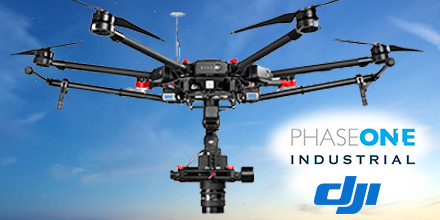
Recently, Phase One Industrial announced full integration of its iXU and iXU-RS aerial cameras with DJI’s M600 and M600 Pro drones.
Phase One Industrial was the first to deliver 100-megapixel medium format aerial cameras.
Built using DJI’s SDK, this is the latest drone platform supported by Phase One Industrial.
From photogrammetry to critical infrastructure monitoring, Phase One continues to innovate inspection tools capable of addressing diverse aerial imaging applications.
DJI M600 and M600 Pro Integration
The integration with DJI’s M600 and M600 Pro platforms is already delivering high quality results.
“The Phase One Industrial IXU camera with the DJI M600 drone, delivered extraordinary results,” said UAV Flight Systems Manager Tobias Wentzler, Lufthansa Aerial Services. “We achieved millimeter per pixel accuracy. This allowed us to inspect in exquisite detail and lift our mission results and accuracy to a new, high-end level. We identified the subtlest cracks or imperfections that were not visible to conventional inspection methods.”
Phase One Industrial’s continuous efforts to identify and develop aerial imaging solutions meet the exacting needs of aerial imaging professionals in diverse markets.
“When our clients hire us, they expect the best,” said Ron Chapple, CEO of Aerial Filmworks. “With the new Phase One Industrial aerial cameras integrated with DJI drones, Aerial Filmworks can deliver the robust performance, highest resolution and finest image quality to support our clients’ cinematic projects.
“GEO1, the survey division of Aerial Filmworks, a solutions-driven provider in the electric and gas/oil marketplace, also benefits from this development. Now, we have the right solution to help satisfy our clients’ requirements for the high resolution data and flight efficiencies.”
Phase One Aerial Camera Integration
Phase One Industrial iXU and iXU-RS aerial cameras’ integration with DJI M600 and M600 Pro drone systems include:
- 100MP and 50MP metric aerial cameras
- Smart triggering of the camera by waypoints / fixed distance / fixed time
- Support for mission planning applications (such as DJI Ground Station pro) – for waypoints missions
- Geo-tagging of all files’ location and gimbal position
- Dual remote controllers (drone and camera) enable each operator (UAV pilot and camera operator) to focus on their respective mission goals
- Industrial-grade build of the camera and aerial lenses, all of which are designed specifically for tough use in harsh environments.
The integration also provides a new iX Capture Mobile application for iOS, featuring an intuitive, user-friendly interface, and support for total remote control of the camera.
iX Capture Mobile was designed using the DJI open platform development tools, and offers various operating modes, including:
- Video Streaming
- Auto or Manual Capture settings to determine the values of the ISO, shutter speed and aperture
- Auto capture mode to enable image capturing by waypoints, fix distance or by time intervals
- Camera control via DJI Lightbridge 2 dials.
Aerial Camera Specs
Phase One Industrial’s iXU and iXU-RS series of high-resolution, metric cameras are known for their precision imaging (offering sensor resolution from 50 to 100 megapixels), small size and low weight (from 1.25 kg). These industrial-grade cameras offer direct integration with many other UAV manufacturers. In addition, they support the workflows of many leading image post processing software, such as Pix4D, Agisoft, SimActive, and others.
Designed to capture images with superior accuracy and quality, Phase One Industrial aerial cameras cover larger aerial surfaces in less time. This means less flight time needed for efficient flying.
Operators can enjoy both unprecedented visibility and a lower cost by utilizing drones rather than traditional airplane or helicopter methods. In addition, using drones offers improved worker safety across many dynamic and challenging environments. Such environments, include: power line monitoring, inspection of wind turbines, railways, roads, bridges and other civil engineering jobs.
Pricing and Availability
Phase One iXU and iXU-RS series camera systems, now with full support for DJI M600 and M600 Pro drones, are now available. Camera package prices begin from $29,000 (complete with integration kit and lens). For more information,
please contact us.
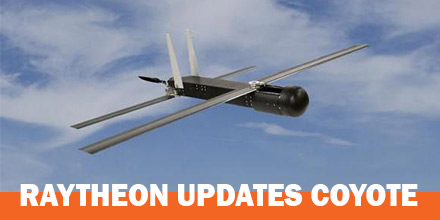 Recently, Raytheon announced the development of a “Block 2” update of the Coyote, a tube-launched unmanned aircraft system (UAS) it acquired more than two years ago.
The aim is to produce a low-cost, multi-mission-capable air vehicle that users ultimately dispose of once it completes a mission.
“We do recover and reuse them in our development work. However, for operational use and purposes, it is meant to be disposable or ‘attritable’. It’s meant to be a one-time platform just like a Tomahawk missile,” said John Hobday, Raytheon’s Coyote business development lead.
“The difference is that we are approaching the Coyote platform not only as a disposable, but as a low-cost system. That’s part of the disruptive nature of what we’re trying to do with this platform—to create this low-cost appliance, if you will.”
Recently, Raytheon announced the development of a “Block 2” update of the Coyote, a tube-launched unmanned aircraft system (UAS) it acquired more than two years ago.
The aim is to produce a low-cost, multi-mission-capable air vehicle that users ultimately dispose of once it completes a mission.
“We do recover and reuse them in our development work. However, for operational use and purposes, it is meant to be disposable or ‘attritable’. It’s meant to be a one-time platform just like a Tomahawk missile,” said John Hobday, Raytheon’s Coyote business development lead.
“The difference is that we are approaching the Coyote platform not only as a disposable, but as a low-cost system. That’s part of the disruptive nature of what we’re trying to do with this platform—to create this low-cost appliance, if you will.”

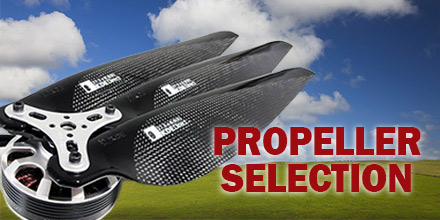 To choose the optimal drone propeller blade, the user should consider a number of factors.
Drone propeller blades have a significant influence on power and affect how smoothly a drone flies.
As such, flight efficiency is one of the most important considerations. It begs the question, how will new drone propeller blades improve the flight efficiency of your multi-rotor UAV?
When selecting new drone propeller blades, the following factors are important considerations:
To choose the optimal drone propeller blade, the user should consider a number of factors.
Drone propeller blades have a significant influence on power and affect how smoothly a drone flies.
As such, flight efficiency is one of the most important considerations. It begs the question, how will new drone propeller blades improve the flight efficiency of your multi-rotor UAV?
When selecting new drone propeller blades, the following factors are important considerations:
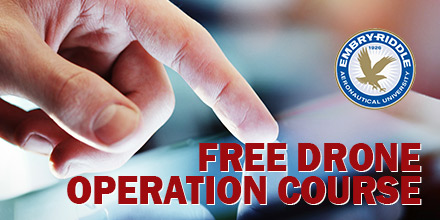 Embry-Riddle Aeronautical University’s
Embry-Riddle Aeronautical University’s 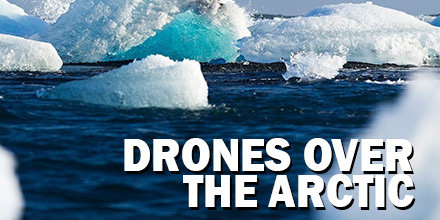 The race to develop vehicles powered by clean energy is well on its way. Currently, electric and hybrid cars are readily available on the market. As for drones, most already rely on "clean energy" in the form of lipo batteries, to operate.
Solar energy is one sector, however, where exploration is still in its infancy.
Recently, researchers from the Autonomous Systems Laboratory and Glaciologists from ETH Zurich collaborated on a special project: Sun2Ice. The goal? Develop a solar-powered drone and test its ability to monitor glaciers over the vast expanse of the Arctic.
Given the size and immensity of glacial landscapes, the challenge for scientists was designing a vehicle that offered extended flight times. To accomplish this, the team looked to harness the power of the sun.
The end result was AtlantikSolar, a UAV equipped with solar panels that allowed it to stay aloft for days.
The race to develop vehicles powered by clean energy is well on its way. Currently, electric and hybrid cars are readily available on the market. As for drones, most already rely on "clean energy" in the form of lipo batteries, to operate.
Solar energy is one sector, however, where exploration is still in its infancy.
Recently, researchers from the Autonomous Systems Laboratory and Glaciologists from ETH Zurich collaborated on a special project: Sun2Ice. The goal? Develop a solar-powered drone and test its ability to monitor glaciers over the vast expanse of the Arctic.
Given the size and immensity of glacial landscapes, the challenge for scientists was designing a vehicle that offered extended flight times. To accomplish this, the team looked to harness the power of the sun.
The end result was AtlantikSolar, a UAV equipped with solar panels that allowed it to stay aloft for days.
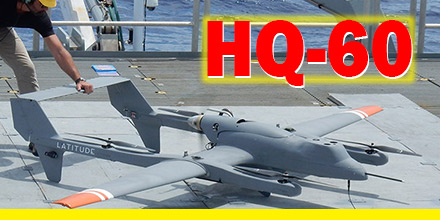 We know more about the universe than we do about the oceans.
As such, it is no surprise that researchers are looking for new ways to understand the ocean.
Of particular interest is the sea surface microlayer (SML) which is identified as the top 1 millimeter of the ocean surface.
We know more about the universe than we do about the oceans.
As such, it is no surprise that researchers are looking for new ways to understand the ocean.
Of particular interest is the sea surface microlayer (SML) which is identified as the top 1 millimeter of the ocean surface.
 Recently, Phase One Industrial announced full integration of its iXU and iXU-RS aerial cameras with DJI’s M600 and M600 Pro drones.
Phase One Industrial was the first to deliver 100-megapixel medium format aerial cameras.
Built using DJI’s SDK, this is the latest drone platform supported by Phase One Industrial.
From photogrammetry to critical infrastructure monitoring, Phase One continues to innovate inspection tools capable of addressing diverse aerial imaging applications.
Recently, Phase One Industrial announced full integration of its iXU and iXU-RS aerial cameras with DJI’s M600 and M600 Pro drones.
Phase One Industrial was the first to deliver 100-megapixel medium format aerial cameras.
Built using DJI’s SDK, this is the latest drone platform supported by Phase One Industrial.
From photogrammetry to critical infrastructure monitoring, Phase One continues to innovate inspection tools capable of addressing diverse aerial imaging applications.
